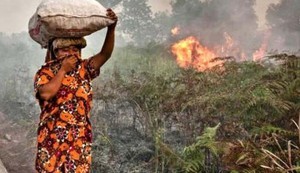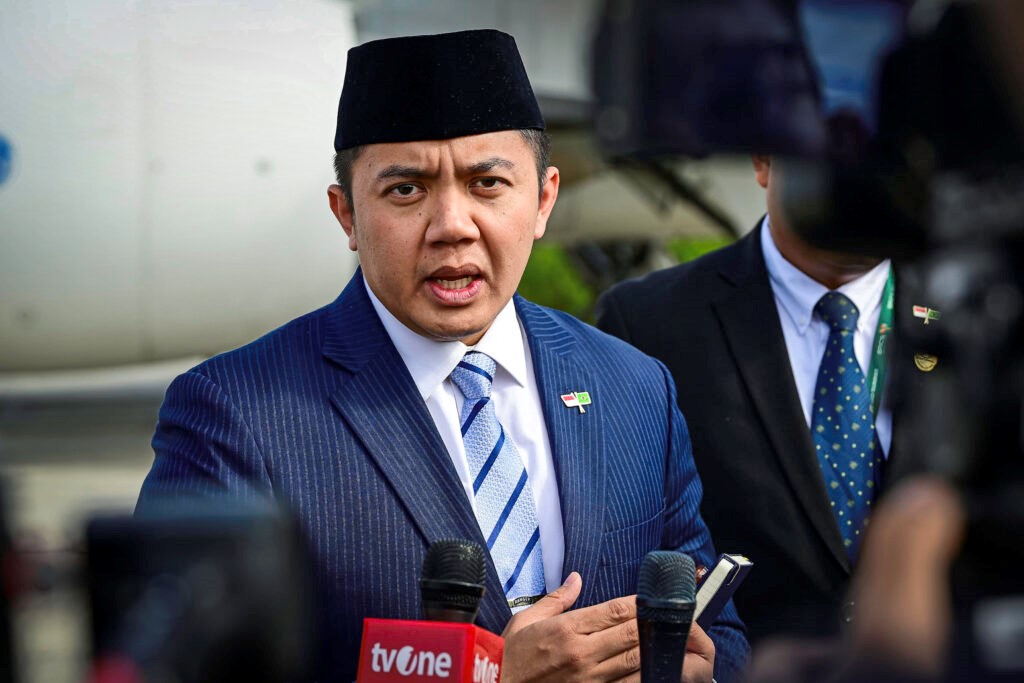BMKG Warns of Forest, Land Fires as Dry Season Looms
 The Meteorology, Climatology and Geophysics Agency (BMKG) has released a report about the rising number of hotspots as the dry season continues to hit a number of regions in Indonesia.
The Meteorology, Climatology and Geophysics Agency (BMKG) has released a report about the rising number of hotspots as the dry season continues to hit a number of regions in Indonesia.
Certain regions are seeing an increase in hotspots, including the provinces of West Kalimantan (798 points), Central Kalimantan (226 points), Jambi (19 points) and South Sumatra (13 points), said Head of BMKG, Dwikorita Karnawati, in Jakarta, Thursday (8/23).
The increasing numbers, according to her, is due to relatively dry atmosphere and weather, which resulted in plants become easily flammable. She also reminded that this need special attention, particularly on the land clearing activity for plantations and agriculture by burning plants which can worsen the condition.
According to Dwikorita, the BMKG also continues to coordinate with Ministry of Environment and Forestry (KLHK), regional governments, related agencies, and the public to improve preparedness and awareness of potential forest and land fires, dangers of air pollution and haze, potential land drought and clean water crisis.
We must be aware of the exposure of smog from burning plants because it can be pose danger to our health, Dwikorita said.
Meanwhile, Deputy for Climatology of BMKG Herizal said that the weather monitoring done by the BMKG shows that up to mid-August 2018, 95.03 percent of regions in Indonesia had entered dry, while the remaining 4.97 percent is still experiencing rainy season. The dry season, he added, is predicted to last until the end of October this year.
Herizal continued that BMKG’s observation on the series of days without rain as an indicator for meteorological drought shows that the category of very long (31-60 days) to extreme (> 60 days) rainless days (HTH) generally occurr mostly in Java – Bali – Nusa Tenggara.
He added that on some parts of southern Sumatra, Kalimantan, South Sulawesi and Southeast Sulawesi, the dry season is also shown by the increasing number of regions that have experienced medium category of HTH (11-20 days) to long (21-30 days).
Dry season were followed by the appearance of hotspots that triggered forest and land fires which eventually cause haze and worsen air quality. The number of hotspots in West Kalimantan itself has increased by 17.6 percent compared to that in last week, Herizal said, adding that the monitoring air quality equipment at Mempawah Climatology Station, West Kalimantan earlier this week showed that the highest concentration of Particulate Matter (PM10) stands at 356.93 ?g / m3, which is categorized as dangerous.
Maximum visibility is less than 100 meters, he said.
The BMKG predicted that this condition would subside in the next few days, yet,Herizal warned that precautionary measures are still needed to minimize the impacts. (EN / Public Relations BMKG / ES) (STU/EP/Naster)








